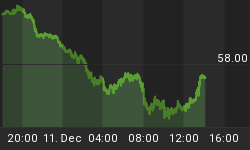From Chapter 15 of The Money Bubble, by James Turk and John Rubino:

Banking didn't start out as a reckless, parasitical plaything of a moneyed and politically-connected aristocracy. In the beginning, in fact, bankers weren't even bankers. They were jewelers and goldsmiths who had to maintain their inventory with vaults, guards etc., and offered storage services to others with valuables to protect. So the original banks were, in effect, very safe warehouses.
Eventually some goldsmiths noticed that the paper receipts they gave to their customers to evidence the valuables left in storage began to circulate as currency alongside their countries' coins. A shopkeeper accepting these receipts in payment knew that he could go to the goldsmith to redeem them for gold and silver, and also recognized that a paper receipt was more convenient to use as currency than were pieces of metal. Gradually these receipts became a widely-accepted form of payment, circulating among buyers to sellers and saved like other forms of wealth.
The goldsmiths then noticed something else about their new paper-money invention: Only a tiny fraction of their clients asked for the return of their valuables in any given period, which led to a bright - but legally and morally-dubious - idea. Why not start issuing receipts in excess of the gold and silver on hand? The goldsmiths could spend this currency themselves or lend it to others - thus inventing the business/consumer loan. Henceforth the total gold and silver in the vault (the goldsmith's reserves) would equal only a fraction of the receipts circulating as currency.
"Fractional reserve banking" was thus born of deception if not outright fraud, because for the receipts to retain their value the goldsmiths had to pretend that those paper claims to gold and silver were backed by an equal amount of metal and were therefore of equivalent value. They were not, of course, because a tangible asset is more valuable than a promise to pay a tangible asset, particularly when the latter outnumbers the former.
The goldsmiths, having evolved into more-or-less recognizable bankers, then realized that more deposits equaled more profits. So they began paying people for deposits of gold and silver rather than charging for their storage, thus inventing the interest-bearing account.
The resulting system had some inherent dangers, most obviously that it tempted bankers to lend out ever-greater multiples of deposits, increasing the odds that they would be unable to meet withdrawal requests and collapse. This happened frequently early-on, eventually leading governments to regulate the amount that a given bank could lend against its capital.
For a sense of how this works, imagine a bank with $100 in capital that is required to hold a reserve equal to 20 percent of its loans outstanding - which based on experience is usually more than enough to satisfy a typical day's withdrawal requests. In our example, the bank can lend 4/5ths of its depositors' money, or $80, while 1/5th, or $20, remains in reserve. Now here's where it gets interesting: When our hypothetical bank makes a loan, the recipient deposits the proceeds in another bank, which can lend out 4/5ths of that deposit. The recipients of those loans make deposits in other banks, and so on, until a huge multiple of the original deposit base has been turned into circulating currency.
The result is an "elastic" money supply. When borrowers are optimistic and want to increase their borrowing, banks in a fractional reserve system can in the aggregate offer them immense amounts of new credit. So the money supply, instead of being determined by the amount of gold, silver or other bank capital in the system, can expand dramatically to accommodate an energetic society's demands.
But it can also contract dramatically. If an economy that has greatly increased its money supply through bank lending suddenly takes a downturn or is unnerved by an unexpected crisis, borrowers will pay off their loans or default on them and banks won't replace them, while depositors seek the return of their cash. These actions cause the money supply to collapse, potentially all the way back to the level of base money in the system. The result of this fluctuation in the supply of circulating currency is a recurring series of booms and busts that wipe out businesses, individuals, and banks and frequently send the general economy into recession or depression.
Fractional reserve banking was, in fact, a major cause of the Great Depression. To condense a long, complex story into a single paragraph, the extra currency that was printed by the belligerents during World War I (which ended in 1918) was recycled through the fractional reserve banking system and massively amplified via the process we've just described. This tsunami of new credit caused the Roaring Twenties boom in asset prices - especially global equities - that popped in 1929, destroying the pseudo-wealth created in the previous decade. The collateral supposedly guaranteeing bank loans evaporated and sentiment turned negative, sending the fractional reserve credit machinery into reverse and collapsing both the banking system and the real economy.
Today's situation is much, much worse. To see how, click here:

















